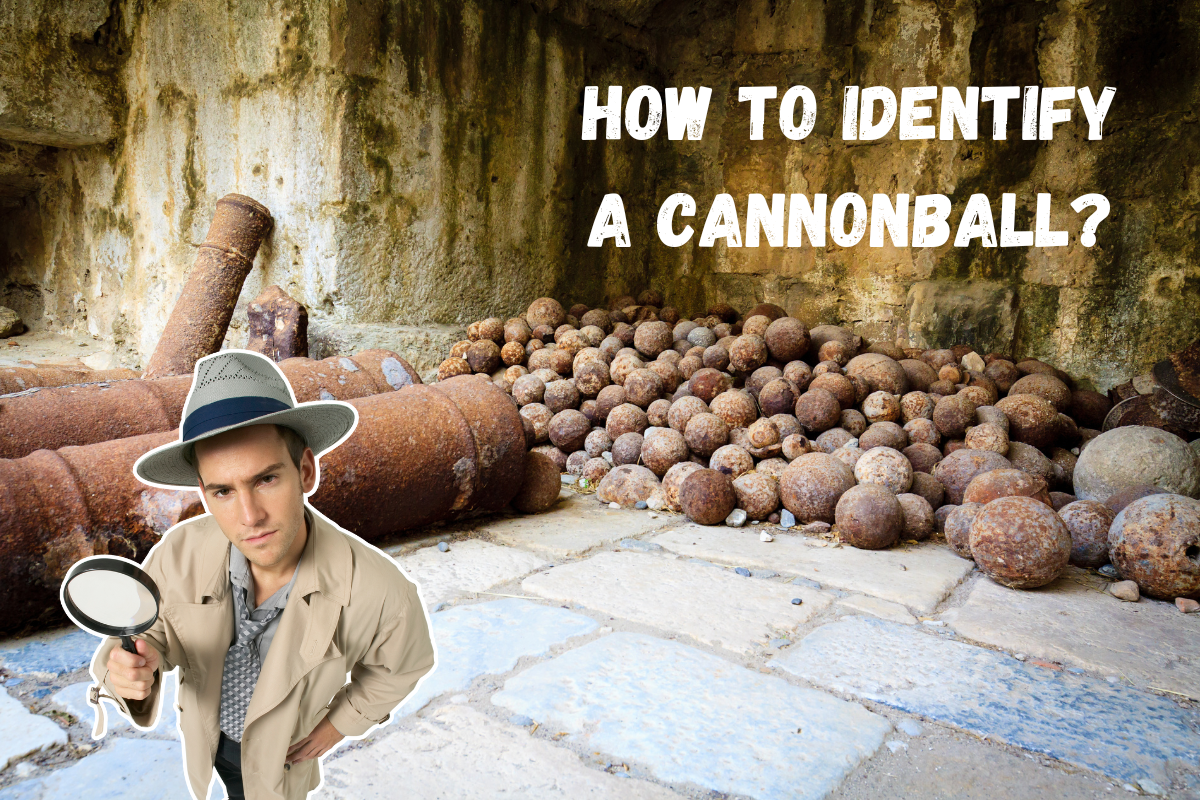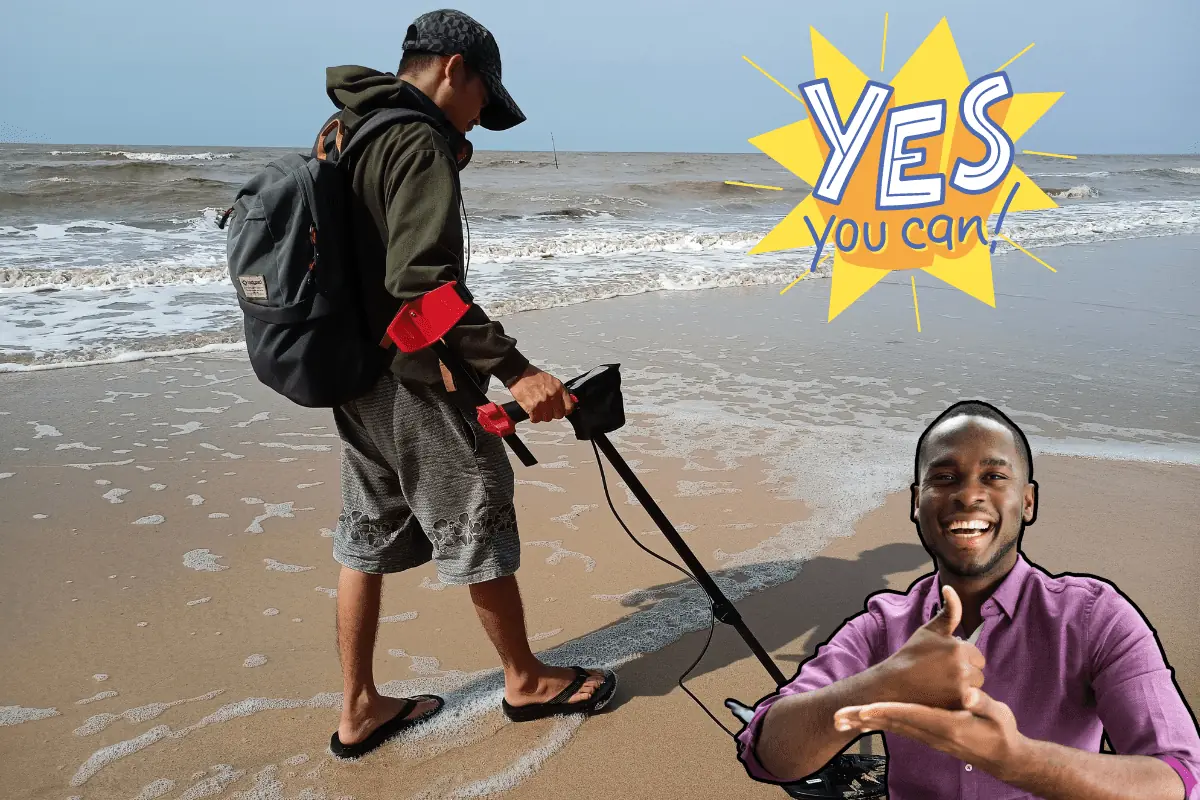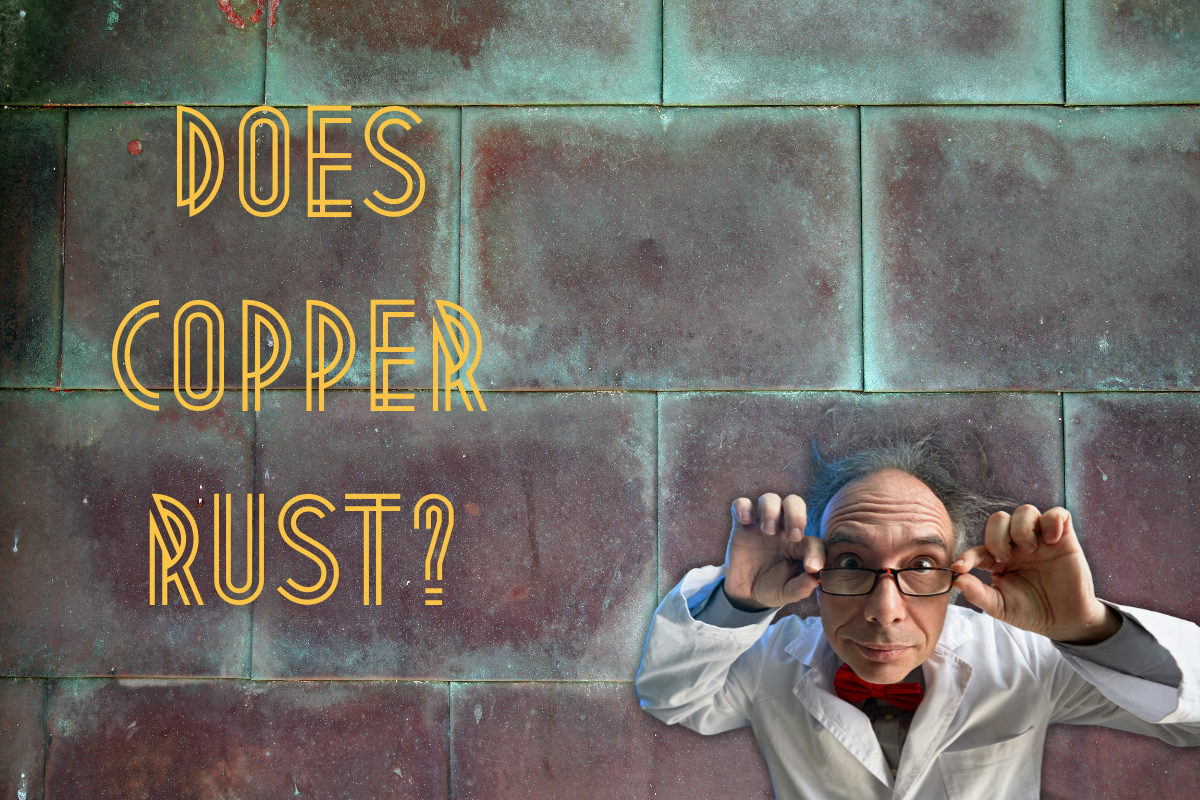You’re on vacation.
Like any other trip, you’ve brought along your favorite metal detector.
And like any good sidekick, it’s reliable and never lets you down.
But something is different this time.
You find nothing but rocks with each promising beep or zip. Between shades of grey and speckled black, your porous rock collection is starting to pile up.
Maybe this has happened before, but if not, don’t worry. Your metal detector isn’t malfunctioning.
It’s just your search coil is zeroing in on some volcanic rock.
Why is a Rock Setting Off My Metal Detector?
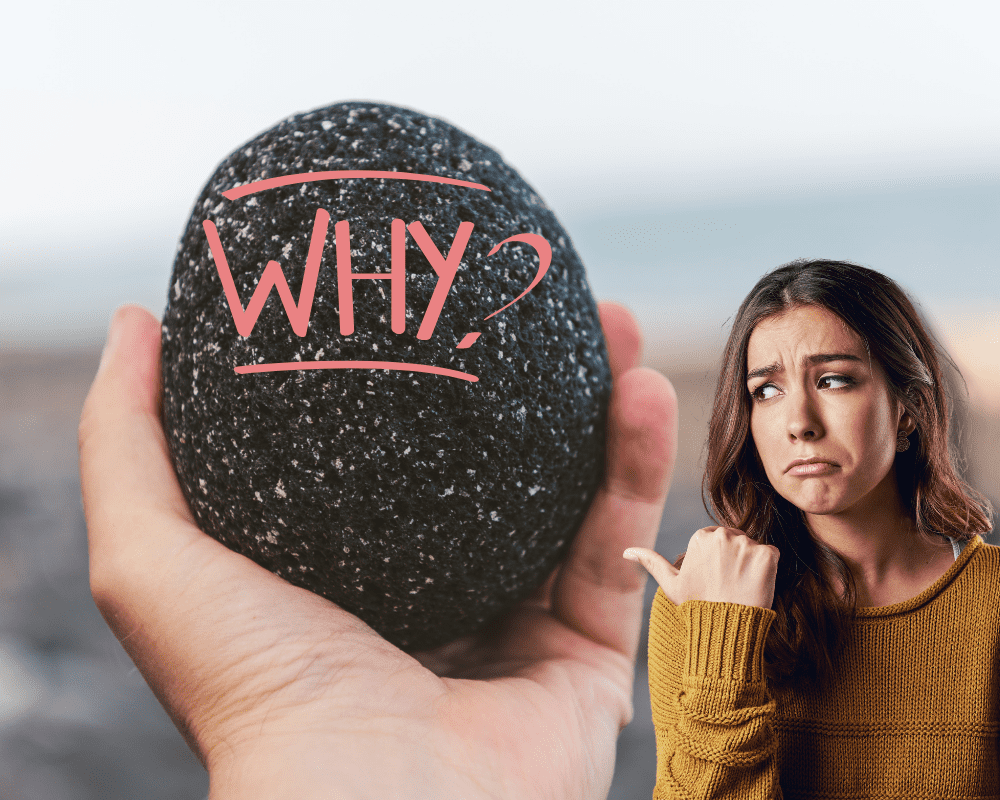
Congratulations, you’re not crazy!
That rock you just found is what has set off your metal detector.
Not all rocks are created equal, though.
Now, I’m not a geologist, but when you’ve had plenty of experience dirt fishing like I have, detecting rocks happens from time to time.
Some rocks will set off your metal detector because they have a high concentration of conductive minerals, usually iron oxide.
These conductive rocks are referred to as hot rocks.
What is a Hot Rock?
In simple terms, hot rocks are rocks with assorted metals in their composition. Again, more often than not, the metal found is iron-bearing.

Depending on who you ask, there are different groupings of hot rocks. But the most widely accepted classifications are positive hot rocks and negative hot rocks.
The negative hot rocks are more difficult for your metal detector to target because their internal metals are non-conductive and consist of magnetite.
You might pick up a shortened signal with negative hot rocks when swinging your coil in one direction. However, the signal isn’t consistent.
Positive hot rocks, on the other hand, are very conductive. These are the rocks you’ve most likely found.
You might be wondering how traces of metal got into these rocks in the first place.
Well, the reason these metals exist within a stone isn’t so easy to pinpoint.
However, it is easier to determine the composition origin of some stones, like volcanic rocks.
What is Volcanic Rock?

“Volcanic rock (also called extrusive rock) is one type of magmatic rock (igneous rocks) and is the condensated product of extrusive magma after diagenesis and compaction, which differ greatly from sedimentary rocks in forming conditions, environments, and distribution.”
Caineng Zou, 2013
Now that you have the technical definition of volcanic rock, let me simplify it for you.
Volcanic rock is formed from a volcanic explosion when the released lava cools from exposure to oxygen.
This cooling process hardens the lava into rock form.
You may find a lot of volcanic rocks on your hunts because they’re so plentiful on the surface of our planet.
A 2009 geologic research article estimates that 8% of the Earth’s surface consisting of land is covered by volcanic rock.
In fact, avid Texas gold panners are familiar with the abundance of these rocks in the Quitman Mountains.
What is a Volcanic Rock Called?

Volcanic rock goes by several names. Some are more technical than others.
You’ve probably heard them referred to as lava rocks or lava stones. While it’s catchy and easy to remember, lava is liquid. The cooled and hardened form of lava is no longer technically lava.
The more scientific term for volcanic rock is an igneous rock, also known as magmatic rock.
However, it doesn’t end there.
Igneous rock can be broken down into two subcategories, intrusive and extrusive, and include other hard-to-come-by metal elements like 100% pure iron.
The difference is how the lava (magma) cools.
Intrusive rocks cool more slowly underground, specifically in the Earth’s crust.
Extrusive rock forms from the rapid cooling of lava on the Earth’s surface.
What Are the 3 Types of Volcanic Rock?
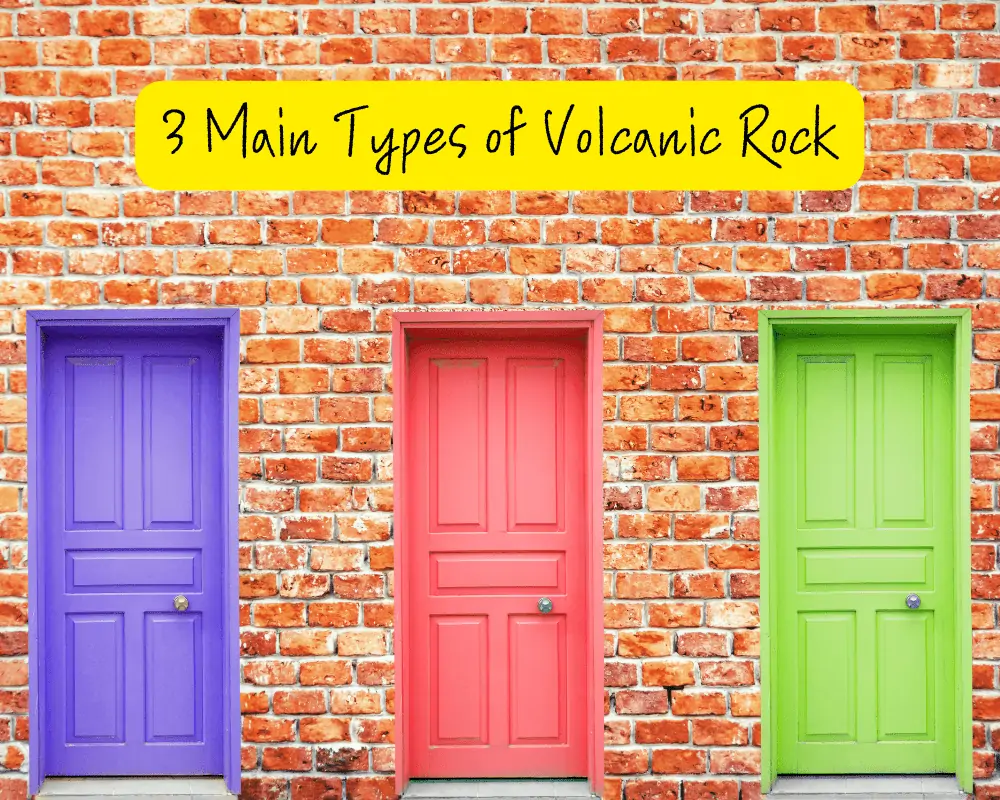
There are several types of volcanic rock, but basalt, andesite, and rhyolite are more prevalent.
Each type is unique because of its contents and explosive temperatures.
Specifically, an essential content component in each magma type is silica.
Silica, or silicon dioxide, makes up 95% of the known rocks on Earth. The most plentiful variation of silica is quartz.
Magma types (basaltic, andesitic, rhyolitic)
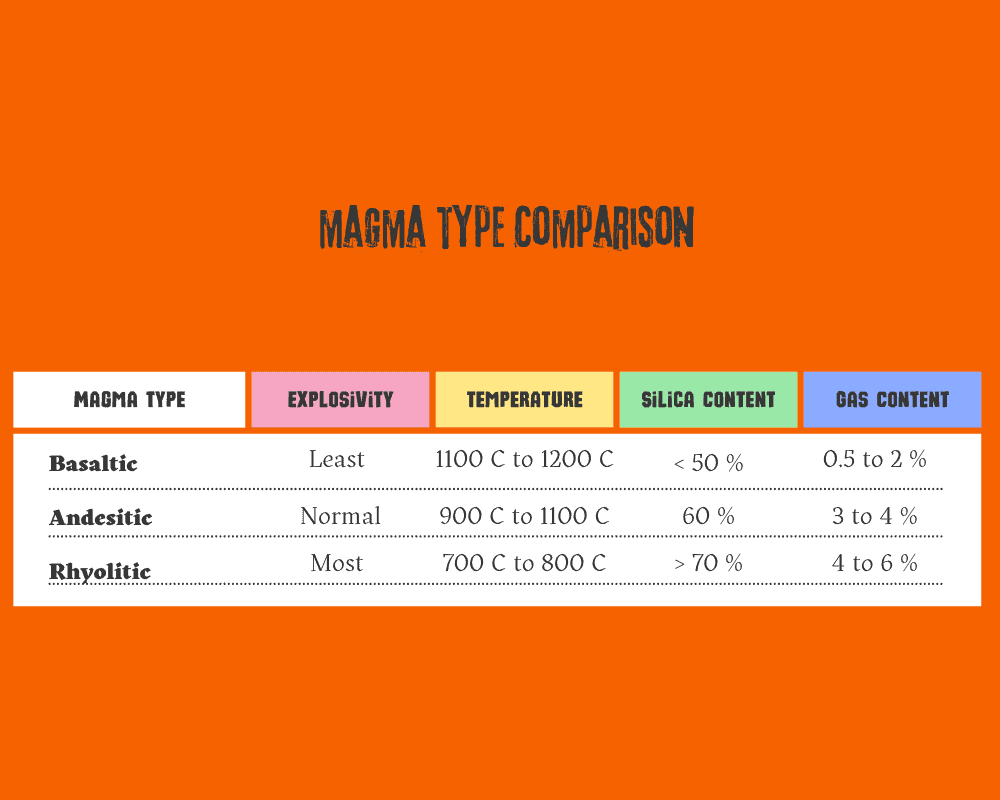
What Does Volcanic Rock Look Like?
Basalt is reasonably easy to identify, thanks to the black, powdery-looking texture.
This volcanic rock’s smooth, featureless exterior results from the eclectic granular minerals compacted together, like volcanic glass and large crystals, known as phenocrysts.
Sometimes, basalt is more of a dark gray color, depending on the mineral consistency.

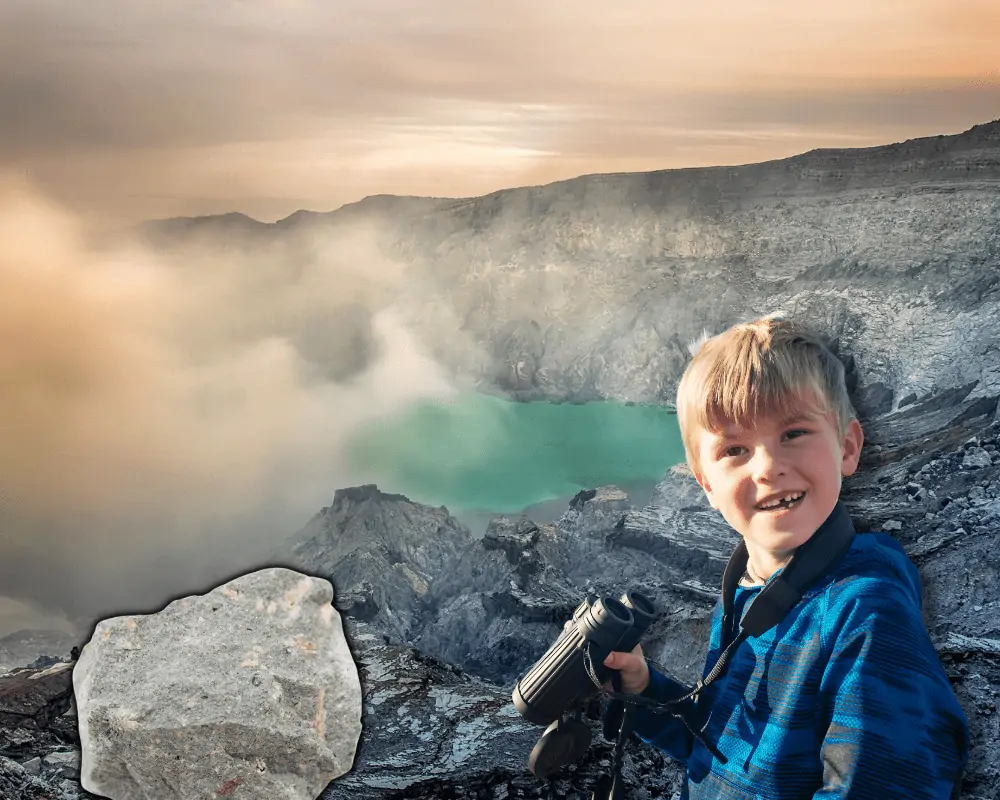
As for andesite, you’ll primarily recognize them from their dark and light color combination.
While they are similar to basalt in their smooth appearance, they don’t share the same singular coloring.
Whether you find them with the base tone of a dark gray or even a sandy-looking color, they are sprinkled with finely-grained dark and light minerals.
Finally, rhyolite volcanic rock comes in the softest shade of the three. Because of their quartz and feldspar crystal composition, they can appear tan, light gray, or salmon colored.
You might even mistake them for granite due to their high silica viscosity.

Does Volcanic Rock Contain Metal?
Ok, Diggers, now we’re getting into the meat and potatoes of why your metal detector picked up on seemingly ordinary rocks.
There is metal found in volcanic rock, among other minerals.
Volcanoes across the globe are natural deposits of aluminum, gold, nickel, lead, zinc, and copper.
Excited yet?

Even better, diamonds are found within volcanic areas.
So, when a volcanic explosion occurs, this mixture of ingredients exists in a state of excessive heat in its magma (lava) form.
It rapidly cools and solidifies these together when introduced to an oxygen environment.
Is There Gold in Lava Rock?
As I mentioned above, gold is just one of the metals in volcanoes. Thus, when volcanic rock is formed, gold may be found within.
But be aware that finding gold in volcanic or lava rock isn’t as likely as in other hot rocks.
However, it’s not impossible.
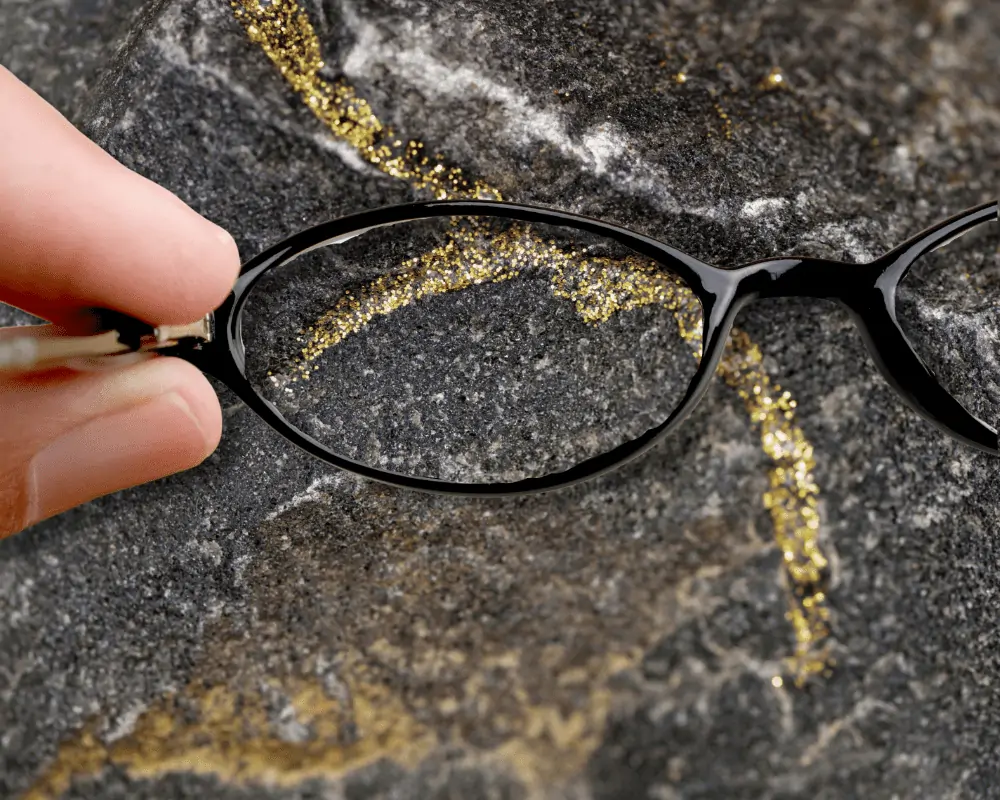
A geological survey published in 1972 by the US Department of the Interior compared samples from around the US and the results varied.
Specifically, the data showed gold concentrations in volcanic rock to be highest within basalt and andesite found along the Western United States and Rocky Mountain region.
So don’t give up hope.
What Does Real Gold Look Like in Rock?
When finding gold in other hot rocks, the authentic gold mineral has some unique traits you can quickly identify.
You could be correct if you believe you’ve found gold in one of your hot rocks. Unfortunately, mother nature has a few tricks up her sleeve.

What you think is gold could actually be a similar-looking mineral like sulfide or pyrite.
Pyrite, also known as fool’s gold, is a shiny yellow iron sulfide found in many rocks, including igneous rocks.
Most experienced detectorists can spot the difference between real gold and fool’s gold. But it’s best to be cautious before claiming victory and take the time to investigate further.
So how can you tell the difference?
The first thing you can do is run your finger along the edge of the suspected gold.
Gold found in rocks is more malleable than the store-bought stuff.
A small knife or sharp tool should be able to leave visible signs of scratching. However, it should still offer some slight resistance against your finger.
Second, get the gold portion of the stone wet.

When raw gold is wet, it will reflect much brighter than the other minerals surrounding it.
But don’t mistake shininess for gold.
Gold isn’t always shiny in raw form. Its color should remain the same in sunlight and shade, as opposed to pyrite, which might sparkle a bit more when light is cast on its surface.
Finally, gold is heavy.
If you’ve found a larger piece of gold in your rock, consider the weight of it in your hand.
You probably won’t feel the added weight from any other stone if it’s pyrite or a similar mineral.
For more information on finding gold with your metal detector, check out my guide with everything you need to know.
Or watch the short clip below. It summarizes everything I just laid out.
Metal Detecting for Volcanic Rock
Alright, you now understand volcanic rocks, what makes them unique, why they set off your metal detector, and in a more minor sense, how other hot rocks affect your treasure hunting.
You might even start considering the idea of being open to hunting for metal-infused stones.
So, where do you start?
Where to Find Volcanic Rock and Other Hot Rocks
Finding volcanic rocks shouldn’t be too difficult.
You’re in luck if you’re an avid diver or shipwreck scavenger.

Because of the many underwater fissures and geographical changes below sea level, the ocean floor is riddled with basaltic rocks.
Although, if you prefer to stay dry, start by searching for land with past volcanic activity.
To save time, you can research flood basalt or plateau basalt. These areas have been identified as places where enormous deposits of basaltic rock have formed from massive volcanic eruptions.
Some example locations are British Columbia, Siberia, Columbia River (northwest US), and parts of the southeast United States.
Below is a map of the large igneous provinces found throughout the world.
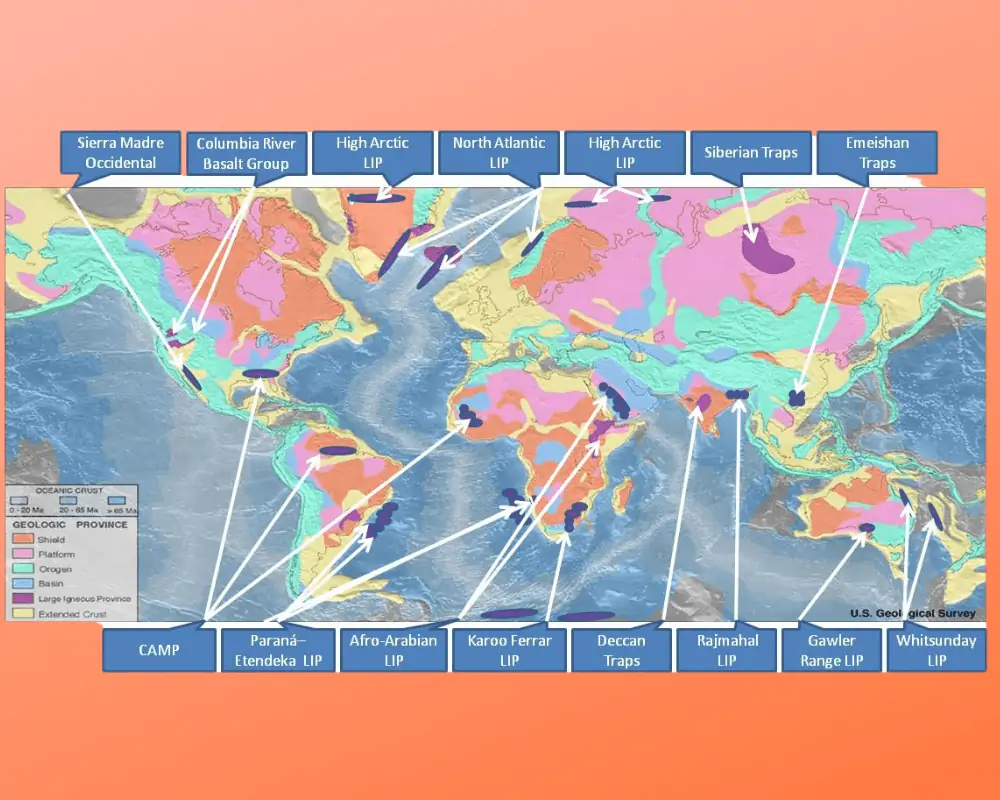
Another excellent reference is the USGS site which details what kind of volcanic rock you can find in each US state.
What Do I Need to Metal Detect for Hot Rocks?
You need a metal detector with advanced tuning features to detect hot rocks and other valuable metals.
Mainly, your metal detector should have ground balance capability, discrimination and notch settings, and other features adept at dealing with highly mineralized areas.
My favorite choices are the Minelab Equinox 800 and the Nokta Makro Simplex.
If your budget is a concern, go with the Simplex. In my professional opinion, you get as much punch as the more expensive Nox.
Besides the metal detector, look into some handheld and long-handled digging tools, a decent rock hammer, and some work gloves.
How to Set Your Metal Detector to Ignore Hot Rocks

Now, if you’re not interested in finding hot rocks and want to ignore them, you can do that too.
There are a few simple tricks you can perform to do this.
First, start by using a smaller search coil. The larger coils increase your range and pick up every minute signal.
You don’t always need a new metal detector if you have the option to interchange coils with your current device.
Another tip is to make use of all your adjustable settings.
High-performance machines with fast recovery, manual sensitivity tuning, and automatic ground balance functions will go a long way in adjusting out hot rocks.
Lastly, just kick those rocks out of the way.
They’re right on the surface usually, so forcible removal is your best and easiest option.
FAQs About Volcanic Rock and Metal Detectors
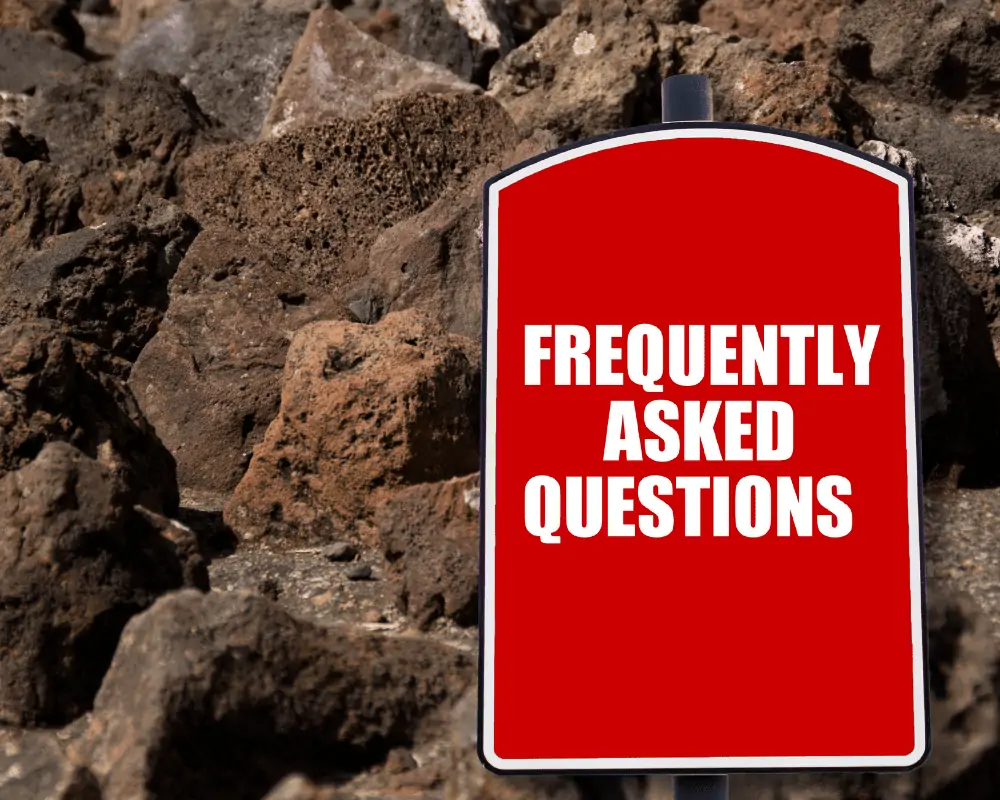
Do you still have questions? Well, I can get you the answers you need.
Are Hot Rocks Valuable?
Hot rocks are valuable for more than one reason.
For starters, they might contain valuable metals inside them. As you previously learned, gold, diamonds, and other precious minerals exist within all types of rocks.
Some hot rocks offer an added value for being extraterrestrial.
Meteorites, also considered a hot rock, will set off your metal detector. These are rarer than gold, so don’t dismiss them as junk.
Other than that, hot rocks are a giant flashing signal, letting you know that the ground is probably littered with gold or copper.
You see, just like gold, hot rocks seem to thrive in highly mineralized areas.
So, if you’re finding a lot of quartz or basalt, keep your eyes peeled and your detector ready.
What is the Most Common Type of Volcanic Rock?

Basalt is the most common of all the volcanic rocks in the world. Moreso than even andesite and rhyolite.
Actually, basalt makes up more than 90% of all volcanic rock on our planet.
This is because basalt is made from fast-moving lava, which makes the spread area more extensive than any other volcanic rock.
Conclusion
I’m glad you Diggers and curious rockhounds stopped by.
Just because volcanic rock isn’t the typical treasure hoard or ancient Roman relic doesn’t mean we should ignore these natural sources of metallic wonder.
If anything, you should understand more about each piece your metal detector picks up.
It may just open a whole new world to you and your collection.
Until next time!



